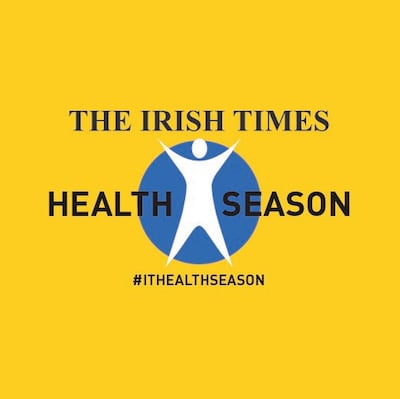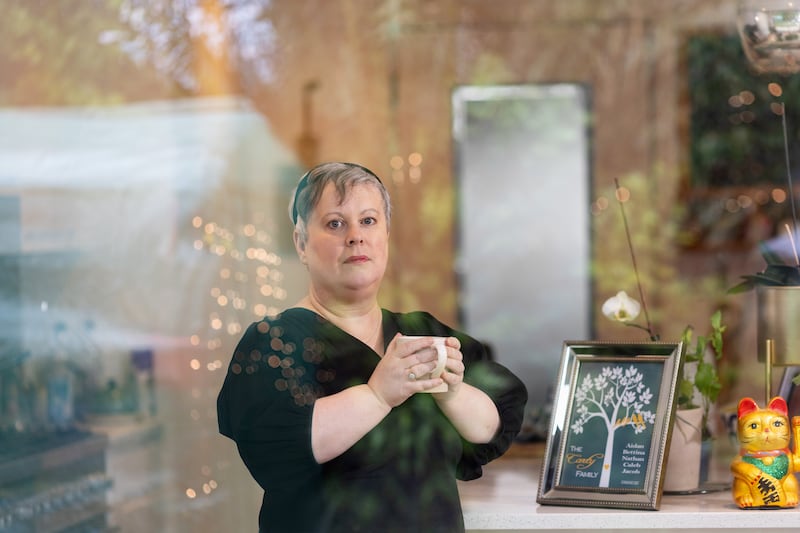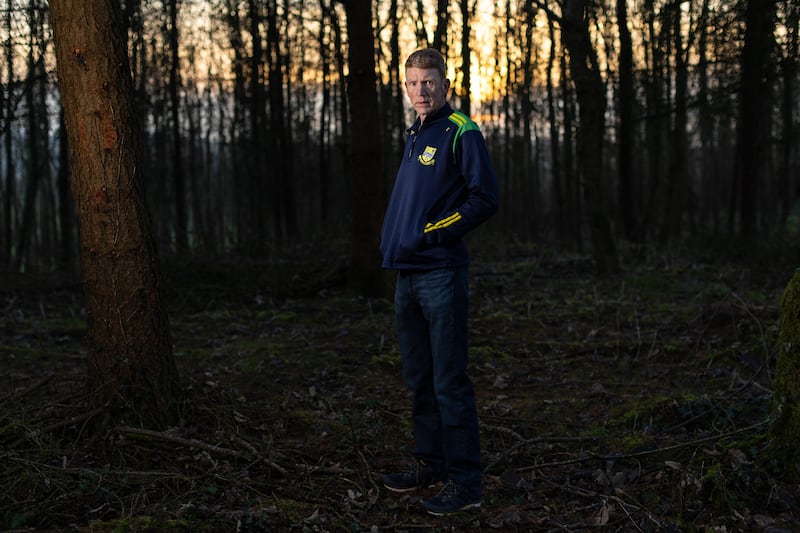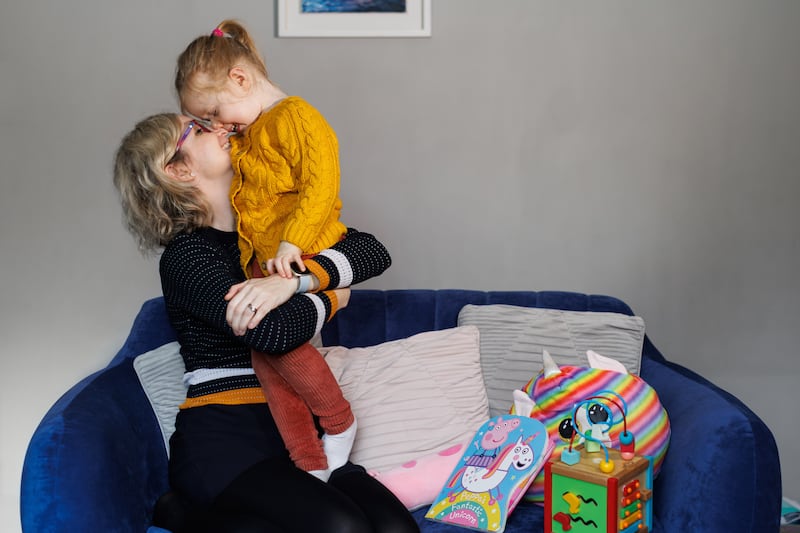Nine-year-old Danny Molloy was diagnosed with paediatric fever disease, a form of auto-inflammatory disease, about two years ago. His mother, Carol Molloy, says the diagnosis has changed their lives. “He now has medication, which stops the high-temperature spikes in their tracks. He is a different child, but if we had known he had this five or six years ago, it would have taken a lot of trauma away.”

Danny was rushed to Children’s Health Ireland at Crumlin in the first 12 hours of his life. Four days later, he had open heart surgery. “He got lots of infections afterwards and was on life support for the first few months of his life. Later, he was constantly sick with high fevers,” she explains. As his intellectual disability emerged, Danny was thought to have DiGeorge syndrome (also known as 22q11.2 deletion syndrome), a diagnosis which was later revoked.
When, in 2021, he was put on trial medication for paediatric fever disease — of which there are 40 different sub-types — his high temperature dropped within hours. “He still gets high temperatures every four to six weeks, but we can give him the medication now. Although he has some behavioural issues and he is non-verbal, I love being his carer,” says Carol, who also has a three-year-old daughter, Willow.
She says they are still looking for the genetic origins of her son’s condition. “I’d love if there was more understanding of rare diseases among health professionals,” she says.
READ MORE
Significant challenges
Approximately 300,000 (one in 17) people in Ireland live with a rare disease, which is defined as a disease that affects less than one in 2,000 people (in some cases, it’s as few as one in 100,000).
There are more than 6,000 different rare diseases in Europe, 80 per cent of which have a genetic origin, either from an inherited gene or a de novo (new) gene mutation. Other rare diseases arise from infections, allergies or teratogenic (chemicals, radiation, etc) causes. The European Organisation for Rare Diseases — of which Rare Diseases Ireland is a member — states that the paradox of rarity is that even though “diseases are rare, rare disease patients are many”.
Prof Eileen Treacy, clinical lead of the HSE National Rare Diseases Office and clinical professor of medicine of rare disorders at Trinity College Dublin says there are “significant challenges” for people with rare diseases. “There are delays in diagnosis, lack of specific treatments for the vast majority of these rare diseases, a scarcity of knowledge and expertise, and lack of integrated care,” she explains.
Many rare diseases are life-threatening, chronically debilitating, often progressive and highly complex disorders with very costly treatments. “Rare diseases are now a public health priority in Europe and with collaborative research projects and proposed data sharing, we are seeing many novel therapies emerging.”
On Wednesday (February 7th), a new rare disease awareness campaign, I am Number 17, will be launched in Ireland. It includes the unveiling of an exhibition of photography by Julien Behal of the 17 “changemakers” who have chosen to share their lived experience of rare disease.
“They have been willing to, I guess, shine a light on the challenges of living with rare diseases, but also the hopes that people have for their future,” says Vicky McGrath, chief executive of Rare Diseases Ireland.

“People living with rare diseases have very little voice. They’re often discounted. They’re often neglected. By bringing them together we’re showing there’s a large number of people. It’s giving them the opportunity to raise that voice, to affect change right across society. And so people can talk about challenges they’re facing.
“It’s a really exciting campaign. This will be the first time we’ll be embarking on a two- or three-year campaign and so you know expect to see a lot of us, expect to see a lot of the changemakers over the years ahead, and we welcome any support or thoughts people have.”
Bettina Carty

Bettina Carty was 15 years old when she was diagnosed with hereditary angioedema (HAE). “When I was younger, nobody knew what caused the swellings I had. If it was on my lips or arms, it was thought to be an allergic reaction. Once, I had really bad facial swelling and the doctor thought I had been beaten up,” explains Carty. Eventually, it was discovered she had a de novo gene mutation with a 50 per cent chance of passing it on.
Carty did pass on her condition to her three sons, who are now teenagers. “The majority of the swelling is abdominal in our cases and I was able to monitor the boys when they were young because I had experience of it myself. But at one stage the porter in Crumlin [CHI at Crumlin Hospital] knew my name as we were in and out of hospital so often with the boys.”
Carty is the Irish contact for the HAE international [hereditary angioedema] group and is always willing to chat to any of the 50 people in Ireland who have the condition. Through an international tracker app, people with the condition visiting other countries can also contact people locally to find out which hospital they should attend in an emergency. “You don’t see what we have. Nobody would think we had a rare disease, but I’ve always encouraged my boys to be open about it and never let it hold them back.”
The development of new self-injectable drugs in the last decade has made it much easier for Carty and her sons to manage their condition. “One of my boys said recently that he has forgotten the pain, as it has been so long since he experienced it.”
Carty herself now attends the immunology department at St James’ Hospital in Dublin every six months for check-ups.
Ian Deegan

Tech worker and father of 12-year-old twins Ian Deegan is living with X-linked agammaglobulinemia (XLA), a rare type of primary immunodeficiency disorder that prevents him from making antibodies. Deegan says he got involved with the I am Number 17 campaign to increase awareness of rare diseases. “There are people like me who don’t show any outward signs of a problem, but they do have a rare disease,” says Deegan who takes maintenance antibiotics and injects himself at home with a subcutaneous infusion every three weeks to help him fight off infections. “I can’t fight infections because I don’t produce enough immunoglobulins so the treatment tops up these antibodies in my blood.”
Deegan says he “lived” in Temple Street hospital [now CHI at Temple Street] as a child because he had so many infections. “My younger brother, Jimmy also had XLA and he died from pneumonia when he was 20.”
Over the years, he has developed bronchiectasis, a form of COPD [chronic obstructive pulmonary disease] which leaves him with a wheeze and cough most of the time. “If there was one thing I could get rid of, it would be this.”
Kasia Whysall

Physiology lecturer and researcher Kasia Whysall says seeking a better future for her three-year-old daughter, Niamh,has made her a better researcher. Together with her husband, Brian McDonagh, also a physiologist at the University of Galway, she is researching the rare disease linked to a variant in the gene encoding a complex called V-ATPase. “Niamh was diagnosed by a blood test soon after she was born because she was having seizures from birth. The seizures were brought under control by medication within a week but she still has mobility and balance issues and gets tired very quickly,” explains Whysall.
As part of her research efforts, Whysall has presented posters at conferences explaining her daughter’s condition. She has joined the American-based V-ATPase alliance which aims to raise funds for more research. “There are only 100 people in the world who have this genetic condition so it’s hard for doctors to know about its de novo mutation. We want to see if drugs used for other conditions might help and we want to investigate RNA [ribonucleic acid] therapies.”
Whysall is also a member of the parents’ support group Rare Ireland which has a private Facebook group where parents seek and share information to help them care for their children. “It’s good to learn from other parents about physiotherapy, special diets and specialist treatments that might help. It’s difficult for us all to know what the future holds although we are happy Niamh is doing so well and is much better than we thought she would be at the beginning.”
Lucy Beckwith

Lucy Beckwith has a rare metabolic disorder called cystinosis. She was diagnosed when she was eight months old because her older sister also has the condition which causes fatigue, chronic pain, weak swallowing muscles and muscle degeneration. “I have taken medications since I was a child and they have helped the symptoms,” she explains. “But, I struggled because I couldn’t do physical education and I missed school a lot when I was sick.
“And because I don’t look like I’m unwell, I didn’t know how to explain it to other people,” says Beckwith who grew up in England but moved to Mayo with her family in 2021. She is now studying media at the Mayo College of Further Education in Ballinrobe. “I know my limits now and when I have to take rest days. I get migraines if I do too much and can pick up viruses if I’m run down.”
- Sign up for push alerts and have the best news, analysis and comment delivered directly to your phone
- Find The Irish Times on WhatsApp and stay up to date
- Our In The News podcast is now published daily – Find the latest episode here














